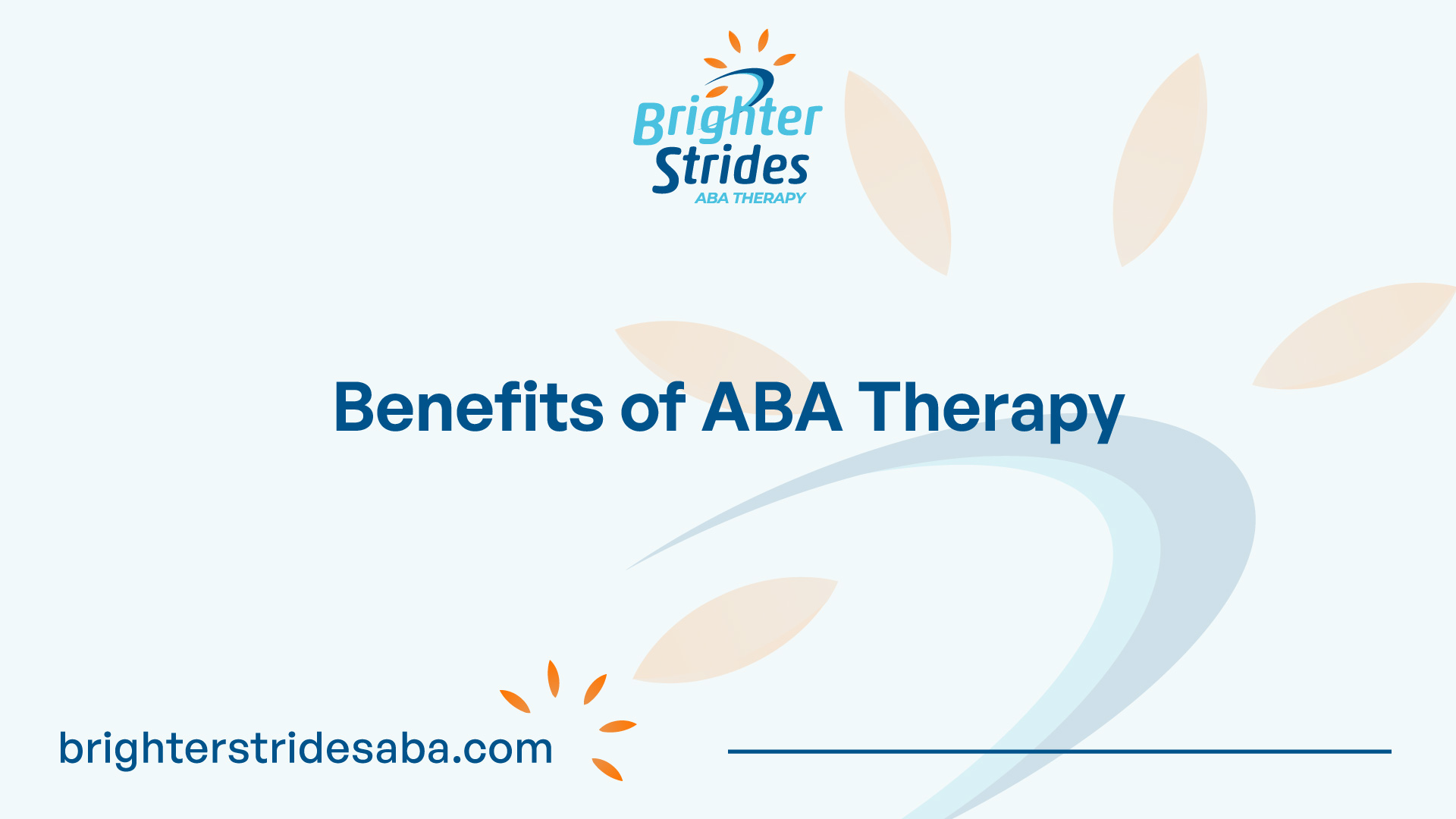
Understanding ABA Therapy Reimbursement
When considering ABA therapy reimbursement, it’s important to understand the cost factors associated with ABA therapy as well as the insurance coverage available.
Cost Factors of ABA Therapy
The cost of ABA therapy can vary depending on several factors, including location, provider experience, and duration of therapy. In the United States, the typical hourly rate for ABA therapy ranges from $120 to $200 per hour [1]. Additional expenses such as food, travel, and materials may also contribute to the overall cost. The yearly cost of ABA therapy can range from $62,400 to $249,600, depending on the intensity and duration of therapy sessions.
Insurance Coverage for ABA Therapy
Insurance coverage plays a significant role in reducing the out-of-pocket expenses associated with ABA therapy. Most insurance plans cover ABA therapy, which can greatly alleviate the financial burden for families [2]. Under the Affordable Care Act (ACA), mental health services, including ABA therapy, must be covered by plans purchased through the Health Insurance Marketplace. Medicaid and Medicare also provide coverage for ABA therapy, with costs varying depending on the specific plan. Insurance companies in many states are mandated to cover ABA therapy, resulting in families only needing to pay the deductible amount for each session. However, coverage for ABA therapy can vary widely from state to state and plan to plan, with some insurance companies being quick to cover ABA while others are more conservative.
To determine eligibility for insurance coverage, insurance providers often require a formal diagnosis of Autism Spectrum Disorder (ASD) or related conditions. The specific criteria for coverage may vary between insurance companies and may require specific assessments or evaluations to establish eligibility [4].
It is important for families seeking ABA therapy to thoroughly review their insurance policy and consult with their insurance provider to understand the coverage details, including any limitations, deductibles, and copayments. This information will help families plan for the financial aspects of ABA therapy and ensure that they make the most of the available insurance benefits.
By understanding the cost factors of ABA therapy and exploring insurance coverage options, families can better navigate the financial aspects of ABA therapy and access the necessary support for their loved ones.
Financial Assistance Options
When it comes to ABA therapy reimbursement, families may encounter financial challenges. However, there are various financial assistance options available to help alleviate the cost burden. Here are three common avenues to explore:
Nonprofit Organizations
Nonprofit organizations play a crucial role in supporting families seeking ABA therapy services. These organizations often provide financial assistance through scholarships, grants, or fundraising efforts. Families can reach out to local autism-related nonprofits or national organizations to inquire about available resources. These organizations can offer valuable support and guidance in navigating the financial aspects of ABA therapy.
State-Funded Programs
State-funded programs can be a valuable resource for families seeking financial assistance for ABA therapy. These programs may offer free or low-cost ABA therapy services for children with autism, tailoring resources to meet their specific needs. Each state has different programs and eligibility criteria, so it’s essential to research and reach out to local government agencies or departments specializing in developmental disabilities or autism services. These programs aim to provide accessible and affordable ABA therapy options to families in need.
School Services
School services can also provide opportunities for financial assistance when it comes to ABA therapy. Some school-funded programs offer coverage for 100% of therapy costs, ensuring that children have access to the necessary treatment within an educational setting. Additionally, private payment options linked to employers can reduce costs significantly. Collaborating with schools and exploring available resources can help families mitigate the financial burden associated with ABA therapy.
It’s important to note that Medicaid, a government-funded program providing healthcare coverage for low-income individuals and families, often includes coverage for ABA therapy. While Medicaid typically covers ABA therapy, it’s crucial to consider that each state has its own policies and requirements. Families should consult their local Medicaid office to understand the specifics of coverage in their area. State government or nonprofit funds may also be available to aid residents in paying for ABA therapy costs, further reducing financial barriers.
By exploring these financial assistance options, families can access the necessary resources and support to make ABA therapy more affordable. It’s advisable to research local resources, reach out to nonprofit organizations, government agencies, and school services to determine eligibility and explore available financial aid programs.

Importance of Early Intervention
Optimal Age Range for ABA Therapy
Early intervention plays a vital role in the effectiveness of Applied Behavior Analysis (ABA) therapy for individuals with autism. Research suggests that the period between 2 and 6 years of age is particularly beneficial due to increased receptiveness to learning and greater neuroplasticity, leading to significant improvements in communication skills, social interactions, and behavior [1].
During this critical developmental stage, children are more open to acquiring new skills and behaviors, making it an optimal time for implementing ABA therapy. Early intervention with ABA therapy has shown promising outcomes, with the potential for children to learn enough skills to eventually transition to mainstream classrooms and become more independent [5].
ABA therapy focuses on systematically teaching and reinforcing desired behaviors while decreasing challenging behaviors through individualized behavior support plans [6]. By targeting specific skills, such as communication, self-care, and social interaction, ABA therapy can make a significant impact on a child’s overall development.
One of the key advantages of ABA therapy is its ability to address core deficits associated with autism, allowing individuals to develop crucial skills that may otherwise be challenging, such as speaking, using the bathroom, and improving sleep patterns. By employing data collection and analysis, ABA therapists can track progress and make data-driven decisions to guide interventions.
In addition to addressing core deficits, ABA therapy also focuses on promoting social skills in individuals with autism. Research has shown that behavioral interventions can facilitate peer interactions, aiding in the development of crucial social skills necessary for successful interactions with peers [5]. ABA therapy provides opportunities for individuals with autism to practice and acquire social skills, which can lead to better social integration and improved quality of life.
Furthermore, ABA therapy can empower individuals with autism to become their own best advocates. By fostering competence through skill development, even individuals with limited language skills can learn to advocate for their needs and preferences, enhancing their independence and self-advocacy skills.
It is important to note that while early intervention is considered optimal, ABA therapy can still be beneficial for individuals of all ages. The intensity and duration of therapy may vary depending on the individual’s needs and goals. By seeking ABA therapy at an early age, individuals with autism can maximize their potential for growth, development, and improved outcomes.
For more information on ABA therapy, including the various aspects of therapy sessions and the roles of ABA therapists, explore our related articles: aba therapy sessions and aba therapist roles.
Evolution of ABA Therapy
As an approach to helping children with autism, Applied Behavior Analysis (ABA) therapy has undergone significant evolution over the years. This section explores the positive reinforcement approach used in ABA therapy and addresses criticisms that have led to modern practices.
Positive Reinforcement Approach
Positive reinforcement is a fundamental strategy employed in ABA therapy. It involves rewarding desired behaviors to increase the likelihood of their repetition. By providing a reward or reinforcement after a correct action or behavior, individuals on the autism spectrum can learn to associate positive outcomes with specific behaviors. The reinforcement can take the form of verbal praise, tokens, or other incentives that hold value for the individual.
The positive reinforcement approach in ABA therapy allows therapists to focus on building and reinforcing desired behaviors. By emphasizing positive outcomes and rewards, children are motivated to engage in behaviors that promote skill development and reduce harmful behaviors. This approach aims to create a supportive and encouraging environment that fosters learning and growth.
Criticisms and Modern Practices
While ABA therapy has been widely recognized and proven effective, it has also faced criticisms. One concern raised by critics is that some practitioners solely focus on reducing problem behaviors without adequately addressing skill development alongside it. This has led to discussions about the need for a more balanced approach, where skill-building is prioritized alongside behavior reduction.
Another criticism is that ABA therapy has been accused of trying to make autistic children fit neurotypical standards, potentially neglecting their unique needs. Advocates argue that alternative therapies, such as speech and language therapy, may be more beneficial for building skills and fostering independence in autistic children.
In response to these criticisms, modern ABA practices have evolved to address the concerns raised. Contemporary approaches have moved away from repetitive and rigid methods, instead adopting a more play-based and naturalistic style of therapy. Therapists are trained to make learning enjoyable and engaging for the child, allowing for skill development in a less intensive and more flexible manner. The goal is to facilitate generalization of skills beyond therapy sessions and promote independence in everyday life.
It is important to note that ABA therapy is not aimed at changing the way neurodiverse children think and feel but rather helping them build on their strengths and participate in society as much as possible, embracing their unique neurodiversity.
By addressing criticisms and incorporating modern practices, ABA therapy continues to evolve to meet the diverse needs of individuals on the autism spectrum. The focus on positive reinforcement and the shift toward a more balanced and child-centered approach aim to provide effective support for skill development and foster social and emotional growth. Through ongoing research and the application of evidence-based interventions, ABA therapy strives to enhance the lives of individuals with autism.

Benefits of ABA Therapy
ABA therapy, or Applied Behavior Analysis Therapy, offers several benefits for individuals, particularly children, on the autism spectrum. This evidence-based intervention focuses on skill development and social-emotional growth, helping individuals with autism reach their full potential.
Skill Development
One of the primary goals of ABA therapy is to assist children with autism in learning essential skills that can significantly improve their daily lives. With the aid of data collection to track progress and guide interventions, ABA therapy can help children acquire skills such as communication, self-care, and independent living.
Through systematic teaching techniques, reinforcement, and repetition, ABA therapy addresses a wide range of skills, including language and communication, academic abilities, play and leisure skills, and self-help skills. By breaking down these skills into smaller, manageable steps, individuals can make progress at their own pace, building a solid foundation for future learning.
Social and Emotional Growth
ABA therapy plays a crucial role in helping individuals with autism develop social skills necessary for successful interactions with peers and the broader community. Research indicates that behavioral interventions can facilitate peer interactions, improving socialization and social communication abilities.
Through the use of positive reinforcement, ABA therapy encourages desired social behaviors and teaches appropriate social responses. This can include skills such as turn-taking, sharing, making eye contact, initiating and maintaining conversations, and interpreting nonverbal cues. By targeting social deficits, ABA therapy helps individuals with autism build meaningful relationships and navigate social situations effectively [5].
Furthermore, ABA therapy can foster competence and independence, leading to self-advocacy even for individuals with limited language skills. By equipping individuals with the necessary tools and strategies, ABA therapy empowers them to become their own best advocates, promoting self-determination and enhancing overall quality of life.
In summary, ABA therapy offers significant benefits by promoting skill development and social-emotional growth in individuals with autism. By targeting specific areas of need and utilizing evidence-based techniques, ABA therapy helps individuals acquire essential skills, enhance their social interactions, and achieve greater independence.
Billing Strategies for ABA Therapy
When it comes to ABA therapy reimbursement, accurate and efficient billing practices are essential. Board Certified Behavioral Analysts (BCBAs) often face challenges in navigating the complex landscape of billing insurance for ABA therapy, which can result in a higher rate of denied claims compared to other professions. To ensure a smooth reimbursement process and maximize revenue, it’s important to understand the claim submission process and take steps to avoid billing errors.
Claim Submission Process
The ABA claims cycle generally consists of five steps: verification, patient contribution, claim generation, claim follow-up, and reconciliation. Let’s take a closer look at each step:
- Verification: Before initiating ABA therapy, it’s crucial to verify insurance coverage and benefits. This involves confirming the individual’s eligibility, understanding the scope of coverage, and identifying any preauthorization requirements. Proper verification helps prevent claim denials due to lack of coverage.
- Patient Contribution: It’s important to educate patients and their families about their financial responsibilities, including copayments, deductibles, and coinsurance. Clearly communicate these details and ensure that patients understand their financial obligations before starting therapy.
- Claim Generation: Successful ABA billing relies on accurate and detailed documentation. Establish a robust system to record and store patient information, therapy sessions, and progress details. Accurately record session dates and times, treatment interventions used, and outcomes. Ensure that the documentation aligns with the billing codes and requirements stipulated by the insurance provider.
- Claim Follow Up: After submitting a claim, it’s crucial to track its progress. Monitor the status of each claim and follow up promptly on any pending or denied claims. Timely follow-up can help resolve issues and prevent unnecessary delays in reimbursement.
- Reconciliation: Regularly reconcile payments received from insurance providers to ensure accuracy. Identify any discrepancies and address them promptly. Reconciliation helps maintain financial records and ensures that all services rendered are appropriately reimbursed.
To streamline the claim submission process, it may be beneficial to outsource ABA billing services to a specialized provider with expertise in ABA-specific billing requirements [11]. This can help reduce administrative burden and improve efficiency, allowing BCBAs to focus more on delivering quality care.
Avoiding Billing Errors
Billing errors can lead to delayed or denied claims, which can impact revenue and patient care. To minimize billing errors, consider the following strategies:
- Accurate Documentation: Successful ABA billing relies on accurate and detailed documentation. Maintain a robust system for recording patient information, therapy sessions, and progress details. Accurately record session details, treatment interventions, and outcomes. Thorough documentation helps support the claims submitted and ensures compliance with insurance requirements.
- Compliance with Billing Codes: Ensure that billing codes accurately correspond to the services provided. Familiarize yourself with the appropriate billing codes and guidelines established by the insurance provider. Using incorrect or outdated codes can lead to claim denials.
- Timely Claims Submission: Submit claims promptly within the specified time limits set by insurance providers. Missed submission deadlines can result in claim denials. Keep track of submission deadlines and establish processes to ensure timely claim submission.
- Referral and Diagnosis Report: Medicaid and some other payors require a referral for ABA therapy coverage. Ensure accurate notation of the referring professional’s information before submitting a claim. Additionally, provide a diagnosis report that meets the DSM-5 criteria to support the medical necessity of ABA therapy.
By implementing these billing strategies and avoiding common errors, BCBAs can increase the likelihood of successful ABA therapy reimbursement. Prioritize accurate documentation, stay up to date with insurance requirements, and consider outsourcing billing services to specialized providers to optimize the billing process.

 We've just released an article!
Check out our blog!
We've just released an article!
Check out our blog!



